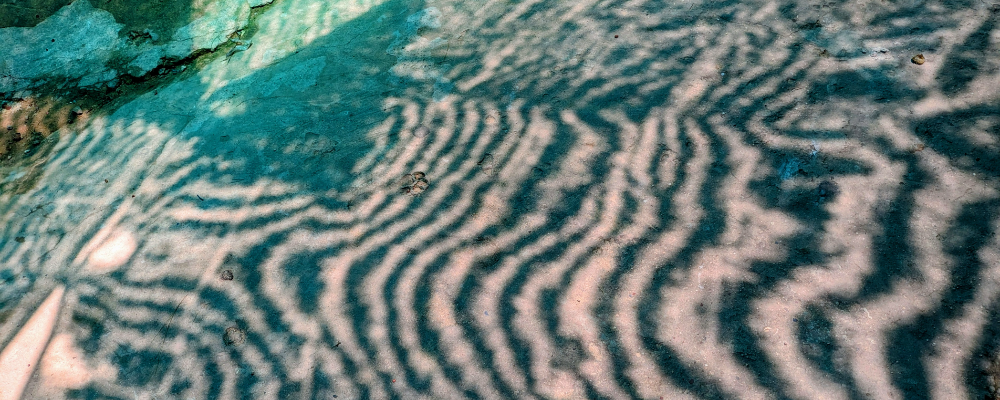Tomorrow marks our last day in Siem Reap, and I’m trying to process what feels like sensory overload in the best possible way. Cambodia has been a constant series of moments that make me stop and think, “Wait, is this real?”
One of the first things that struck me here is how beauty seems to be woven into the fabric of daily life. It’s not relegated to museums or special occasions – it’s just there. Music drifts from temples and street corners, creating this ambient soundtrack that makes even mundane moments feel significant. The architecture tells stories through every carved detail, from the massive temple complexes we’ve visited to the smaller buildings that line the streets.
I keep finding myself craning my neck upward, following the lines of stupas reaching toward the sky or tracing the intricate patterns carved into ancient stone. There’s something about the vertical pull of this place that constantly draws your attention up and out of whatever you were thinking about.
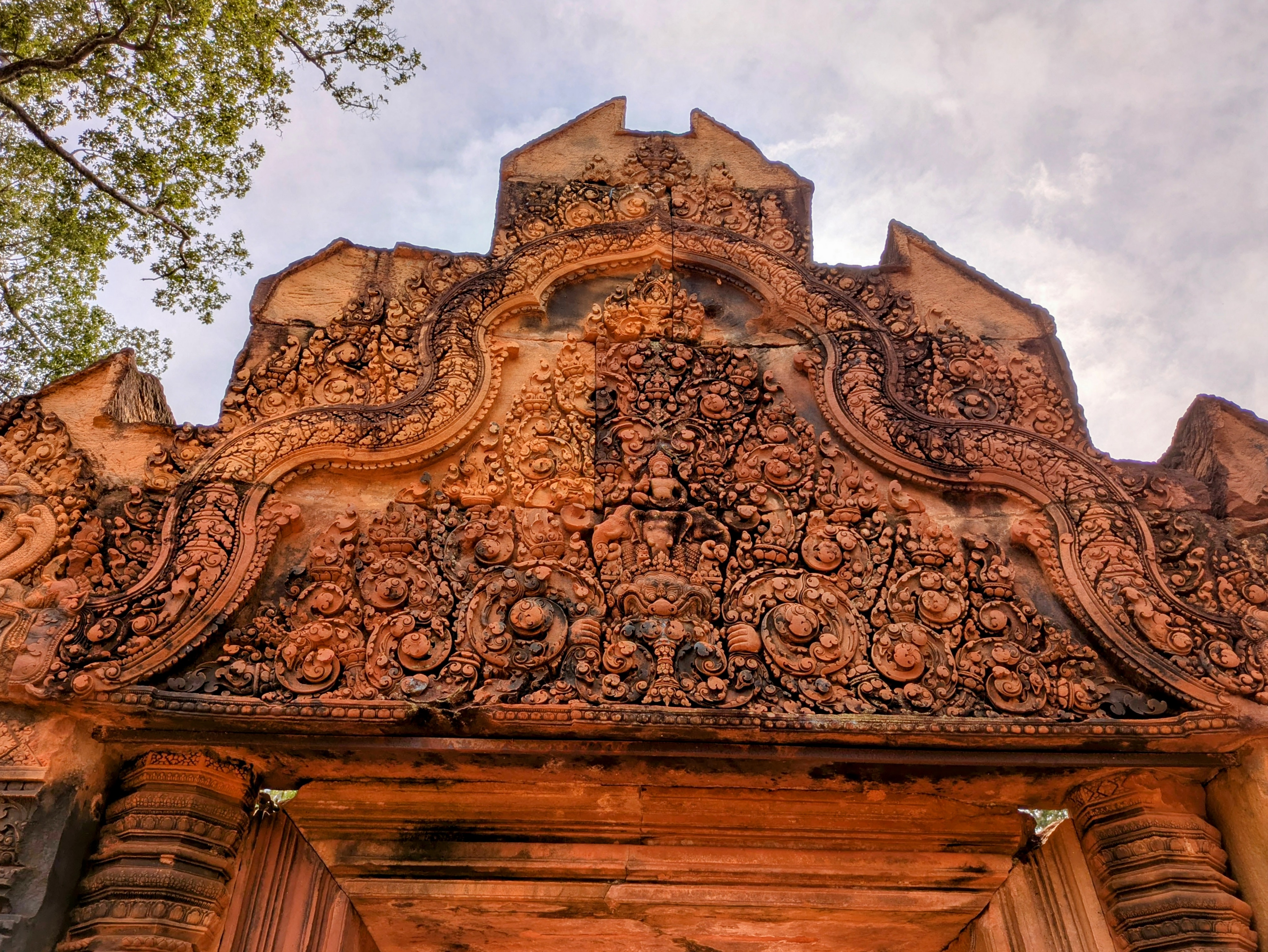
What I wasn’t expecting were the shrines. They’re everywhere. Some are grand and elaborate, others so small you might walk past without noticing. But once you start seeing them, you can’t stop. They’ve become these little invitation points throughout the day to just… stop. Take a breath. Notice where you are.
There’s something powerful about a culture that builds these pause points directly into the landscape. You’re walking along, focused on getting somewhere or thinking about lunch, and suddenly there’s this gentle reminder: Hey, maybe take a second here.
I’m not sure I fully understand the cultural and religious significance yet, but I can feel the impact of having these regular moments of reflection built into the rhythm of moving through space. It’s made me more aware of how rarely I create those kinds of intentional pauses back home.
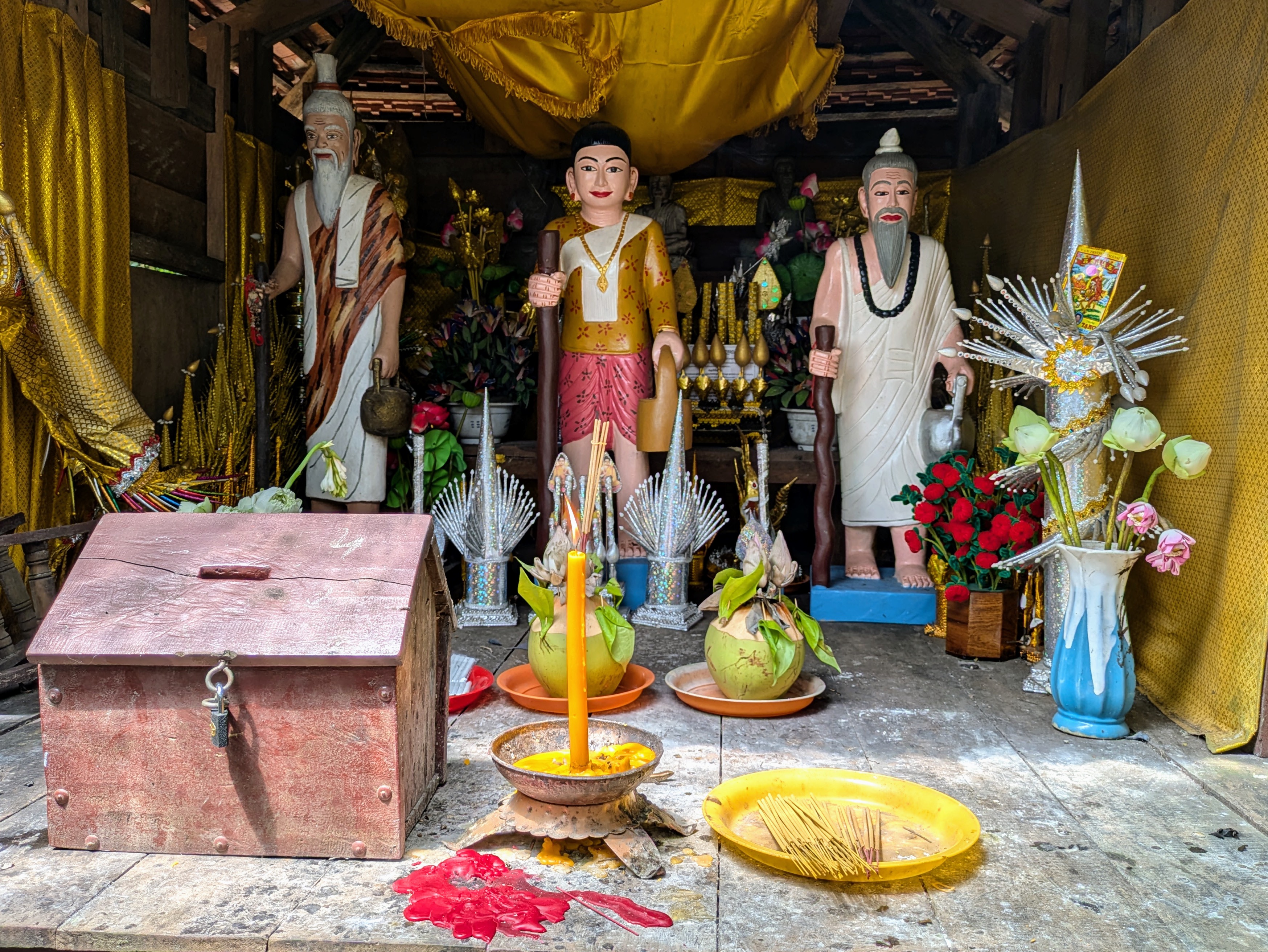
Yesterday we ventured up to Phnom Kulen, and I experienced my first proper jungle rainforest. The butterflies alone were worth the trip, these incredible bursts of color and movement that seemed to appear and disappear like tiny pieces of living art.
But here’s what caught me off guard: I spend so much time here looking up (at temple towers, carved lintels, towering trees) that I almost missed what was happening at ground level. At one point, I glanced down and saw this amazing pattern on the ground. Sunlight filtered through the canopy above, creating these shifting geometric shapes that looked almost deliberate.
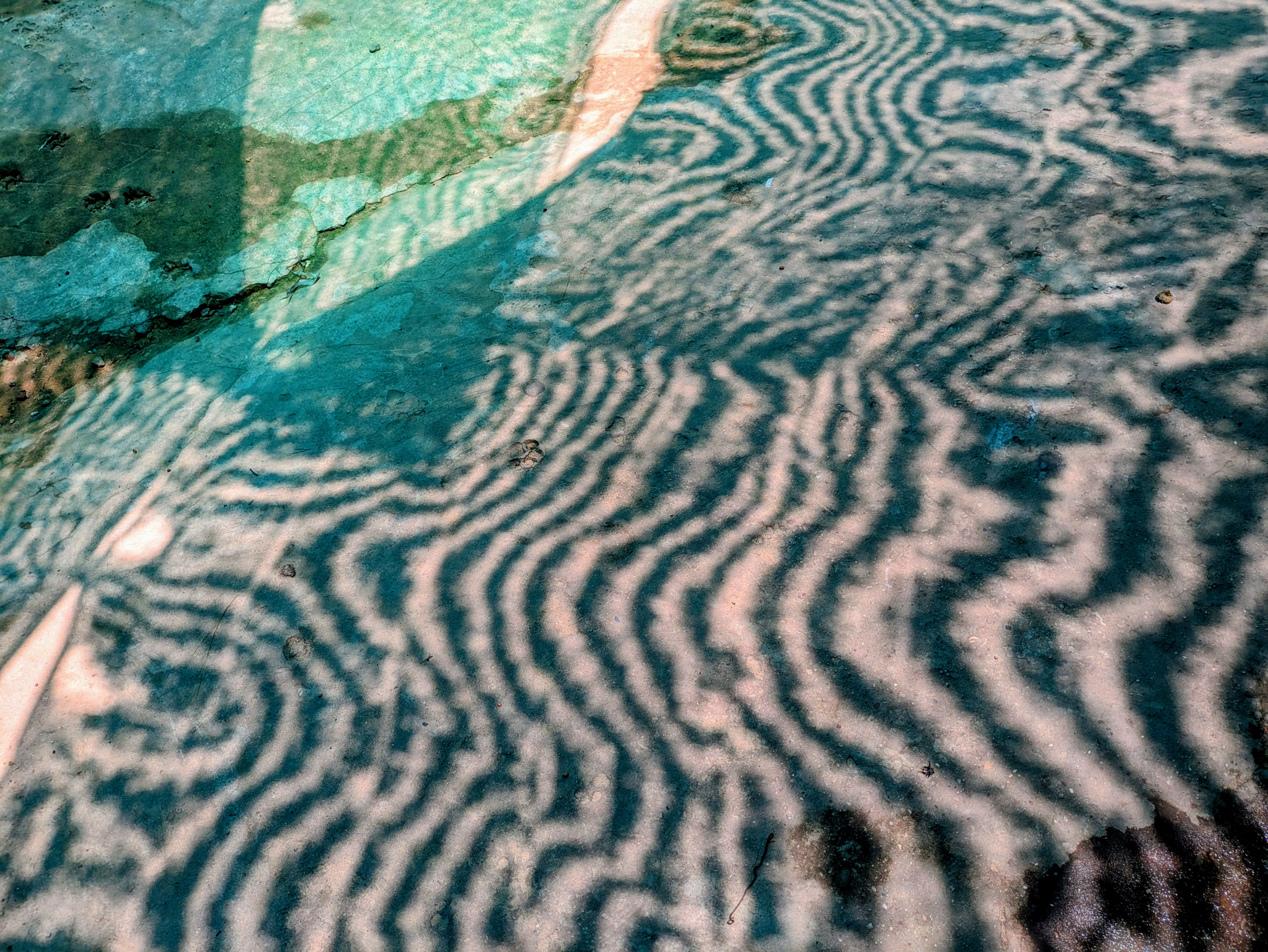
It reminded me that beauty operates at every level here, from the monumental to the molecular. Sometimes the most striking discoveries happen when you shift your perspective, literally.
We visited Banteay Srei, and I kept having this surreal feeling that the aging and patina on the stone looked fake, like someone had applied Instagram filters to real life. The pink sandstone has weathered in these gorgeous, complex patterns that seem too perfect to be natural.
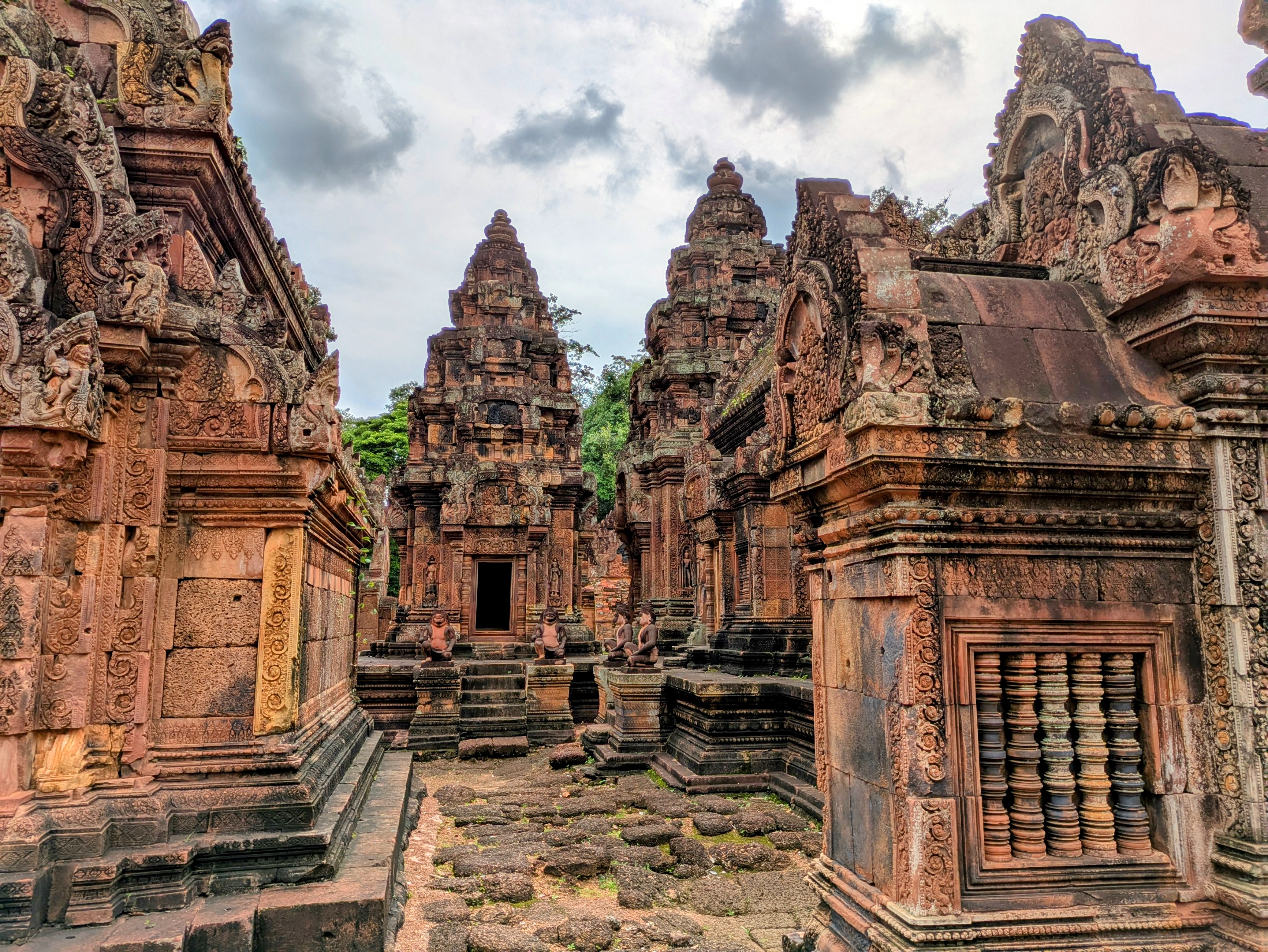
But that’s just what a thousand years looks like.
I’m used to “old” meaning a couple hundred years, maybe. Here, you’re regularly encountering things that were already ancient when the first European cathedrals were being built. There’s something both humbling and oddly comforting about being in the presence of things that have simply outlasted so much human drama.
The carvings at Banteay Srei are so detailed and precise that you can still make out individual expressions on faces and delicate patterns in clothing. Someone sat with these stones and poured incredible skill and attention into every surface. And here we are, centuries later, still stopping to appreciate their work.
I think what I’ll remember most isn’t just the famous temples or stunning landscapes (though those are pretty unforgettable). It’s the accumulation of smaller moments: the way music seems to emerge naturally from public spaces, the gentle rhythm of encountering those small shrines, the realization that beauty can be a default setting rather than something you have to seek out.
And the food! I can’t leave without mentioning that we’ve eaten incredibly well here. Every meal has been this great combination of familiar and completely new, often shared with people who’ve been generous with their time and stories.
Tomorrow may be our last day here, but I suspect some of these observations will stick around. There’s something about experiencing a place where art, spirituality, and daily life aren’t compartmentalized that makes you reconsider how you structure your own days.
Plus, my shutterbug companions have so many photos of temple carvings that I’ll probably spend months trying to properly appreciate them back home.
